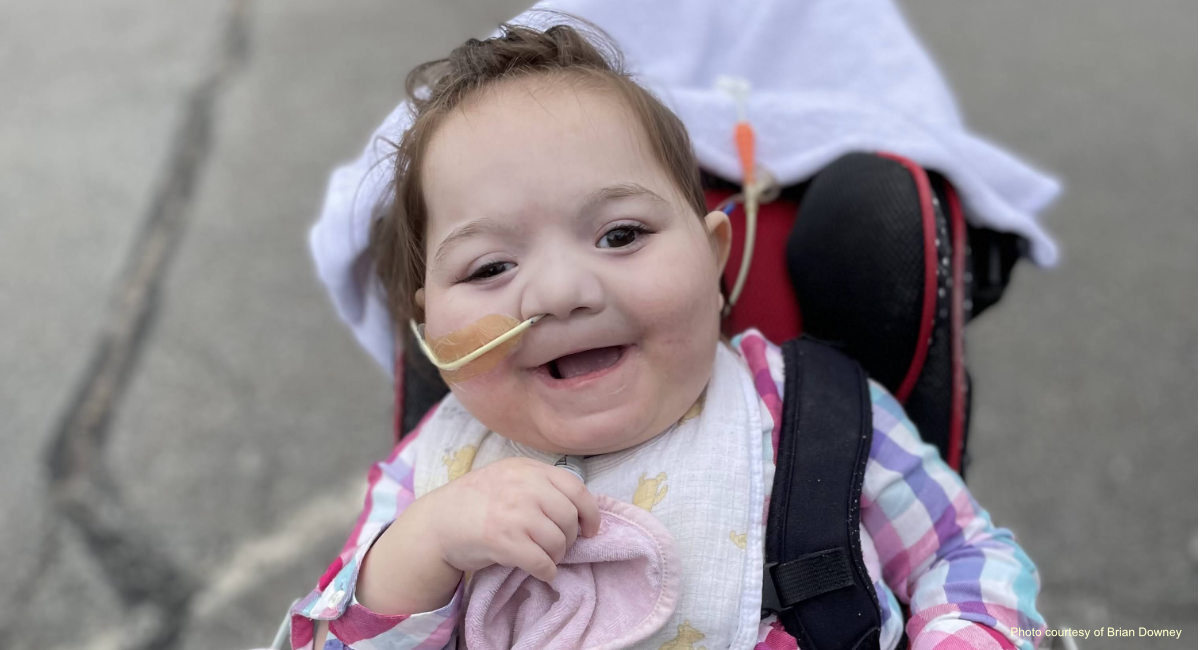The day parents learn their child has a permanent and profound disability is the hardest day of their lives. Except for all the days that follow.
Every day after my son Jon’s autism diagnosis, it sunk in a little more that he’d never have the life my late wife and I dreamed of for him. As I watched his siblings and other children meet life’s important milestones, he fell further behind. I realized Jon would never play a sport, never draw a picture for me with the words “I love you” with the “e” in the wrong direction, and never perform in a Christmas or Thanksgiving pageant.
My heart aches knowing my son will never go to college, never fall in love, never marry, and never give me the grandchildren through whom I’d hoped to see just a little bit of him as a child again.
Every single day is excruciating for parents like me experiencing this loss and this grief — over and over.
REACH PRO-LIFE PEOPLE WORLDWIDE! Advertise with LifeNews to reach hundreds of thousands of pro-life readers every week. Contact us today.
And while we don’t need more to worry about, the government makes it so difficult for us to access the disability services our kids desperately need.
This must change.
Jon was meeting all the developmental milestones and keeping pace with his twin brother Chris until around the age of two. He learned to walk just one day after Chris and fought with him over matchbox cars. Suddenly, Jon was no longer interested in what his brother was doing. He started keeping to himself and stopped responding to our voices, making us wonder whether he had hearing loss. He also started pacing, walking in circles, flapping his hands, and losing what little language skills he had.
All of these are classic signs of autism.
The worst day of our lives happened on April 15, 2003.
“You’re going to want to sit down for this,” the doctor told us. “Whatever plans you had for your son, they’re over. Your son is autistic. You’re going to spend the rest of your lives taking care of his needs.”
My wife Amy and I hated that doctor.
He didn’t know our son! How could he possibly know what Jon would be capable of in the future? We thought the doctor was a horrible, sadistic man who told us the news so bluntly just to hurt us.
If anything, he understated the challenges we would later face.
As time went on, Jon’s behavior became worse. When my wife Amy died in 2017 after her long fight with cancer, he acted out in violence. Despite having the intellectual capacity of a toddler, Jon figured out what happened to his mother. He was depressed. He was angry, and he took his frustration out on himself and everyone around him.
In August 2017, a few months after Amy’s passing, Jon hit his lowest point. In a single four-hour period, he hit himself over 2,700 times. Shortly after, he and I both landed in the ER after he nearly bit my thumb off. There was no way Jon could return home in this condition. He was a danger to himself, me, and his siblings.
Although the physicians there could do nothing for him, Jon spent a week in the ER waiting for a space in the neuropsychiatric unit of the Sheppard Pratt Psychiatric Hospital, which had just 14 beds. His ER stay would have been shorter, but several patients at Sheppard Pratt, whose treatment had been completed, couldn’t be discharged because they had no place to go.
This medical logjam is known as “emergency department boarding,” and — due to a severe shortage of psychiatric beds — is common for patients with mental health problems.
Jonathan eventually spent two months at Sheppard Pratt. Although he emerged much better than when he entered, his behavior was still beyond my ability to manage. To keep him and the rest of the family safe, I sometimes had to restrain him or administer Ativan.
Deciding whether to drug your child or tie them up is a choice no parent should ever have to make. But it was the only choice I had without in-home support.
When I was near my breaking point, a social worker suggested I take Jon to the ER and abandon him there. To be fair, she didn’t use the word “abandon.” But she explained that, if I left him there, the ER wouldn’t be able to discharge him until they found a safe place for him.
To make real, profound, and transformative change, I knew Jon needed more intensive treatment. But getting him admitted to the Kennedy Krieger Institute’s neurobehavioral unit forced us to endure yet another logjam.
Kennedy Krieger had just 16 beds. We’d end up waiting 15 months for Jon’s number to come up. When it did, I learned his admission was delayed due to patients ready for discharge who had no place to go. In a shocking situation, two patients in the unit had been there for a combined total of two years past the completion of their treatment because they had nowhere to go. With the hospital’s cost running $150,000 per month, that meant $3.6 million in resources were wasted while people like Jon — desperate for treatment — were left waiting.
Why, when the need is so great, do specialized hospitals like Kennedy Krieger and Sheppard Pratt have so few beds?
Why is there such a shortage of places for patients to go after treatment?
Why are so many mental health patients boarded in ERs among the most expensive hospital units?
It turns out that much of the bed shortage crisis can be traced to a provision in the Medicare and Medicaid Act of 1965 called the “Institutions of Mental Diseases” exclusion, or IMD exclusion, that prohibits reimbursement to hospitals with more than 16 beds.
The objective of the limit probably seemed reasonable enough to lawmakers at the time. By limiting the number of beds, it was believed that states would be prevented from dumping all the costs of their mentally ill — then primarily treated in large facilities — onto the federal government. It was also believed that the restrictions would incentivize states to increase bed capacity in smaller, community-based settings believed to be less prone to abuse.
Instead, it incentivized states to shut down their large mental institutions. This destroyed the economy of scale for treatment, creating bed shortages running into the hundreds of thousands for those with mental and intellectual disabilities.
Consequently, many of these most vulnerable citizens are suffering — denied the treatment needed to make them safe. Many become homeless, while others end up in the prison system.
Today, comprehensive and effective mental health care is available for the one in five — or 59 million — Americans who experience mental illness. The average among the 34 Organization for Economic Co-operation and Development (OECD) countries is 68 psychiatric beds per 100,000 people, while the United States’ average of 25 beds per 100,000 people — is near dead last in OECD countries. A 2016 report by the Treatment Advocacy Center found that 44 states and the District of Columbia have higher populations of mentally ill individuals in their jails and prisons than they do in their public psychiatric facilities.
Jon is doing well today — both happy and healthy — thanks to the life-changing treatment he received at Kennedy Krieger. But he only received it because I had the financial means to fight for his treatment when he was denied a bed. No parent should ever have to fight to get their child the help they need.
Unless it touches your life, it’s difficult to realize how many people with disabilities are being harmed by the very programs intended to help them.
That’s why the National Center for Public Policy Research’s Able Americans program is producing a new video series, “Faces of the Disabilities Crisis,” to show the very real human suffering that occurs as a result of our broken disabilities system. These are real people, not numbers.
I believe my son, and all those with disabilities, are gifts from God. They touch our hearts in ways no others can, teaching us empathy and compassion that helps us make this world better.
It’s time we treat them as such.
LifeNews Note: David Ridenour is the former president and now chairman at the National Center for Public Policy Research, where he focuses on the organization’s Able Americans program. This column originally appeared at Washington Stand.











